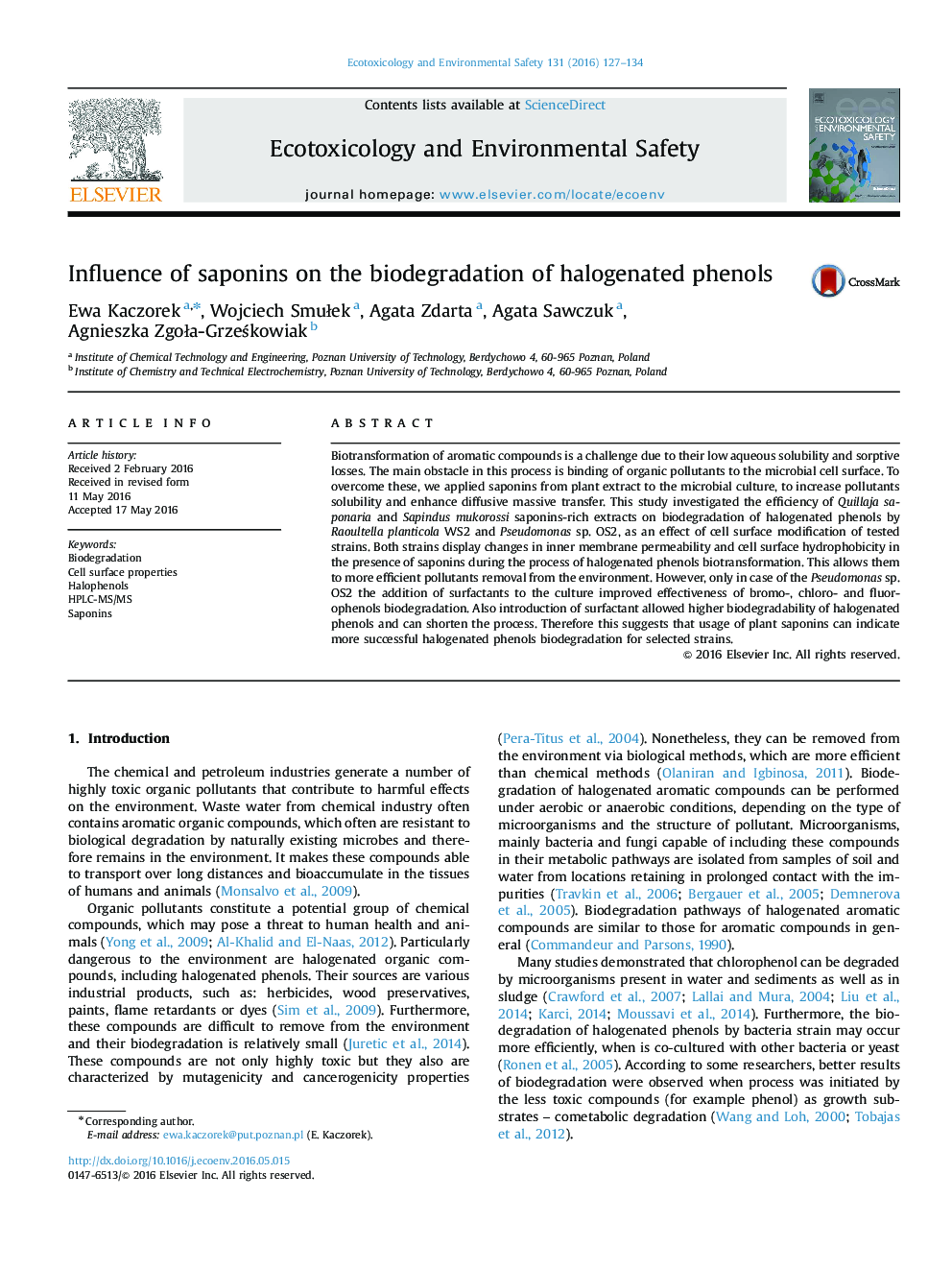| Article ID | Journal | Published Year | Pages | File Type |
|---|---|---|---|---|
| 6311918 | Ecotoxicology and Environmental Safety | 2016 | 8 Pages |
Abstract
Biotransformation of aromatic compounds is a challenge due to their low aqueous solubility and sorptive losses. The main obstacle in this process is binding of organic pollutants to the microbial cell surface. To overcome these, we applied saponins from plant extract to the microbial culture, to increase pollutants solubility and enhance diffusive massive transfer. This study investigated the efficiency of Quillaja saponaria and Sapindus mukorossi saponins-rich extracts on biodegradation of halogenated phenols by Raoultella planticola WS2 and Pseudomonas sp. OS2, as an effect of cell surface modification of tested strains. Both strains display changes in inner membrane permeability and cell surface hydrophobicity in the presence of saponins during the process of halogenated phenols biotransformation. This allows them to more efficient pollutants removal from the environment. However, only in case of the Pseudomonas sp. OS2 the addition of surfactants to the culture improved effectiveness of bromo-, chloro- and fluorophenols biodegradation. Also introduction of surfactant allowed higher biodegradability of halogenated phenols and can shorten the process. Therefore this suggests that usage of plant saponins can indicate more successful halogenated phenols biodegradation for selected strains.
Related Topics
Life Sciences
Environmental Science
Environmental Chemistry
Authors
Ewa Kaczorek, Wojciech SmuÅek, Agata Zdarta, Agata Sawczuk, Agnieszka ZgoÅa-GrzeÅkowiak,
